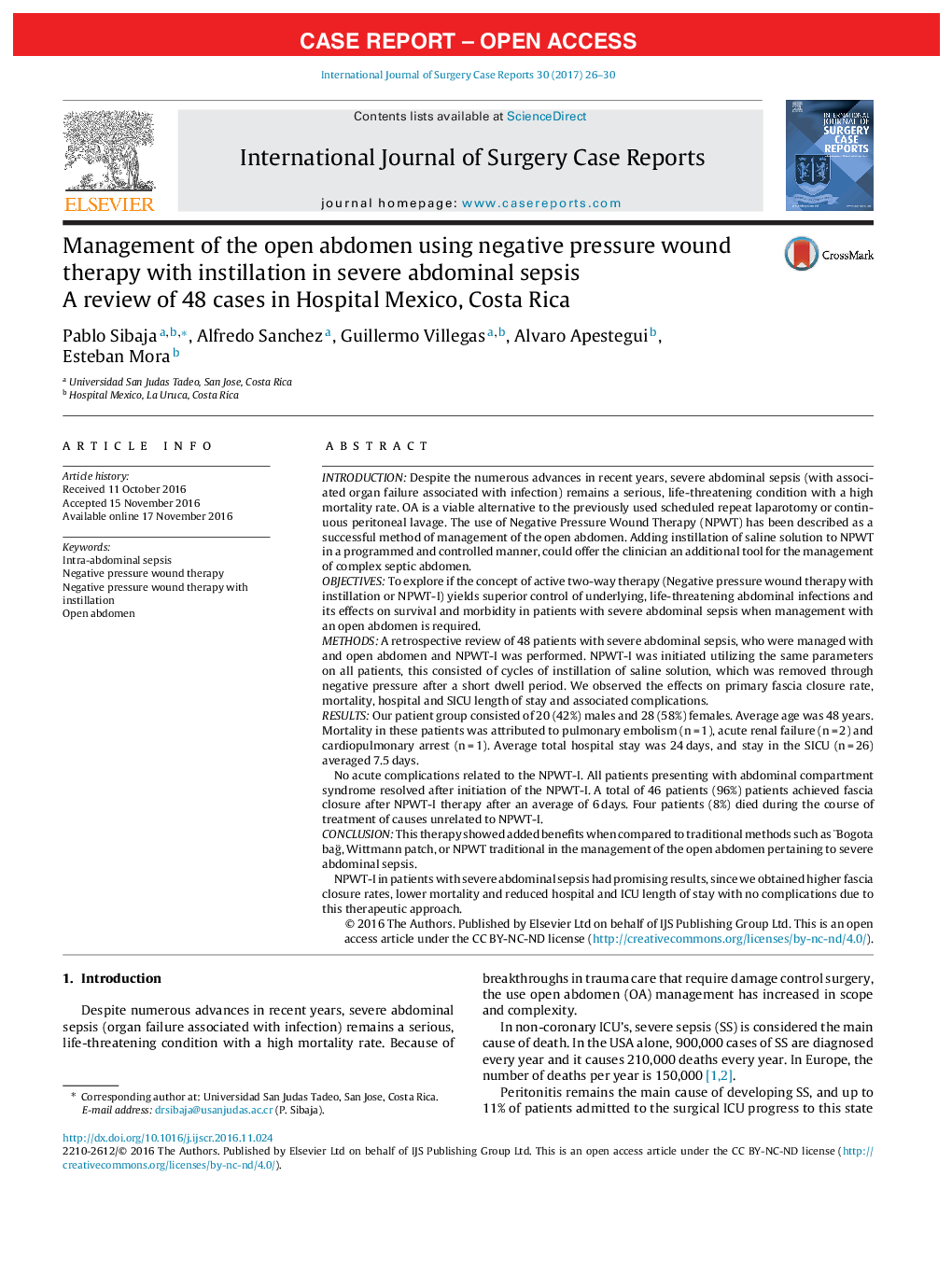| کد مقاله | کد نشریه | سال انتشار | مقاله انگلیسی | نسخه تمام متن |
|---|---|---|---|---|
| 5732567 | 1612084 | 2017 | 5 صفحه PDF | دانلود رایگان |
- Intra-abdominal sepsis remains one the leading causes of mortality in the SICU .
- Multiple surgical approaches have been introduced as part of the management of the open abdomen with varying results.
- Negative pressure wound therapy with instillation in our study population appears as a safe and promising therapeutic option in the context of intraabdominal sepsis.
- NPWT-I is a therapeutic alternative that showed positive results in our patient group.
IntroductionDespite the numerous advances in recent years, severe abdominal sepsis (with associated organ failure associated with infection) remains a serious, life-threatening condition with a high mortality rate. OA is a viable alternative to the previously used scheduled repeat laparotomy or continuous peritoneal lavage. The use of Negative Pressure Wound Therapy (NPWT) has been described as a successful method of management of the open abdomen. Adding instillation of saline solution to NPWT in a programmed and controlled manner, could offer the clinician an additional tool for the management of complex septic abdomen.ObjectivesTo explore if the concept of active two-way therapy (Negative pressure wound therapy with instillation or NPWT-I) yields superior control of underlying, life-threatening abdominal infections and its effects on survival and morbidity in patients with severe abdominal sepsis when management with an open abdomen is required.MethodsA retrospective review of 48 patients with severe abdominal sepsis, who were managed with and open abdomen and NPWT-I was performed. NPWT-I was initiated utilizing the same parameters on all patients, this consisted of cycles of instillation of saline solution, which was removed through negative pressure after a short dwell period. We observed the effects on primary fascia closure rate, mortality, hospital and SICU length of stay and associated complications.ResultsOur patient group consisted of 20 (42%) males and 28 (58%) females. Average age was 48 years. Mortality in these patients was attributed to pulmonary embolism (n = 1), acute renal failure (n = 2) and cardiopulmonary arrest (n = 1). Average total hospital stay was 24 days, and stay in the SICU (n = 26) averaged 7.5 days.No acute complications related to the NPWT-I. All patients presenting with abdominal compartment syndrome resolved after initiation of the NPWT-I. A total of 46 patients (96%) patients achieved fascia closure after NPWT-I therapy after an average of 6 days. Four patients (8%) died during the course of treatment of causes unrelated to NPWT-I.ConclusionThis therapy showed added benefits when compared to traditional methods such as ÌBogota bagÌ, Wittmann patch, or NPWT traditional in the management of the open abdomen pertaining to severe abdominal sepsis.NPWT-I in patients with severe abdominal sepsis had promising results, since we obtained higher fascia closure rates, lower mortality and reduced hospital and ICU length of stay with no complications due to this therapeutic approach.
Journal: International Journal of Surgery Case Reports - Volume 30, 2017, Pages 26-30
